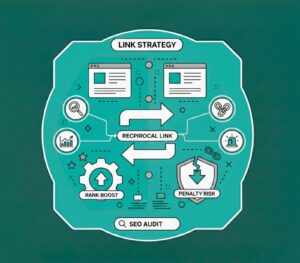Revamp or Rebuild? Choosing the Right SEO Content Strategy for Sustainable Growth
Blogs | Category
Written By: Lauren Davison
Introduction
SEO does not stop once you publish. The web moves fast. What helps you rank today might not work tomorrow. Search engines keep changing, and people search in new ways. To stay seen, your content needs care and steady updates.
That is why an SEO content update matters. A few smart edits can help a page climb again. But sometimes, small fixes are not enough. Some pages need a full rebuild to stay useful and visible.
Knowing when to update and when to rebuild content helps you hold your ranking steady. With the right choice, your site stays fresh, trusted, and ready for long-term growth.
Table of Contents
Why Updating Your SEO Content Matters
A small content change can make a significant difference. A stronger headline, a clearer point, or one new fact can help your page rise again.
These tiny updates keep your site active and are part of a lasting SEO content strategy. They also show readers that you care about giving them the most useful, updated information.
Google’s Focus on Relevance
Google’s goal is simple; it wants to share the best and most current answers. It favours pages that are accurate, fresh, and easy to read. If your post sits untouched for too long, Google may see it as outdated.
Staying active tells Google your site is real and worth showing. By improving old content, you keep your visibility steady even as algorithms change.
Extending the Lifespan of Evergreen Content
Some pages stay useful for years. These evergreen posts, guides, checklists, and tutorials bring steady visitors over time. But even they need attention. Updating a few lines, adding a fresh example, or checking facts helps them stay strong.
A post like “Top SEO Tools” can keep ranking if you refresh it with the latest tools each year. Simple care like this keeps traffic flowing and readers returning. Over time, this habit becomes the core of your SEO content strategy, helping your site grow without starting from zero
When to Update vs When to Rebuild
When a Simple Update is Enough
If your content is still accurate but feels a little stale, an update can fix it. This works for posts with old numbers, missing details, or minor keyword changes. You can add new facts, update images, or replace broken links without having to redo the entire thing.
This kind of light touch is part of optimising website content. It keeps your pages relevant and saves time while still improving results.
When It’s Time for a Complete Rebuild
Sometimes, quick fixes won’t help. When a topic no longer fits what people want or when your structure feels outdated, it is better to rebuild. Search intent changes, and old formats don’t always match what users expect today.
Think about an “SEO 2020 Guide.” Updating a few lines won’t make it useful again. The topic, layout, and examples all need a full refresh. A rebuild lets you create something modern and clear.
It is also a strong way of optimising website content to fit new search trends and reader habits. While it takes more effort, it often brings better long-term growth.
Steps to Optimise Existing Content for SEO
Conduct a Quick Content Audit
Begin by seeing how each page performs. Open Google Search Console or Ahrefs to check which ones have lost clicks or slipped down the results.
Spot pages that sound outdated or miss what readers now search for. Fix missing facts, weak titles, or broken links. Maybe one post once drew steady traffic, but now feels stale. Another might rank for the wrong keyword or fail to hold attention.
These are signs that a small fix could do big things. A fast audit shows what to keep, what to polish, and what needs a full rebuild. It is the first move toward a focused SEO content update that saves effort and still improves results.
Optimise for Modern Search
After finding what to fix, shape your page for today’s readers. Add new internal links so visitors can move naturally through your site. Use pictures, infographics, or short clips to break up long text and keep people engaged.
Add a short FAQ section to cover common questions. This helps your page show up in snippets or voice answers. Pick clear, natural keywords that fit how real people talk about your topic.
Always test on a phone. The page should load fast, look neat, and read easily on a small screen.
Benefits of a Strategic SEO Content Update Plan
Better Rankings and Crawl Efficiency
Search engines pay attention to movement. When your pages get new edits like added stats, cleaner wording, or new links, it tells them your site is active. Google then visits more often to check for changes. This frequent crawling helps your updates get noticed faster.
Each small refresh also improves how search engines understand your page. It helps your content match what people are searching for now. Over time, these small actions boost rankings and keep your site from fading in search results.
Improved Conversions and User Engagement
Updated pages don’t just attract search engines; they keep people interested. When you refresh your layout, improve calls to action, or replace outdated images, visitors stay longer. A clear design and smooth reading flow make them trust your content more.
Adding simple touches like a short video or an FAQ can also turn readers into customers. These updates improve how people move through your site and how they respond to your message. Together, they shape an SEO content strategy built for both visibility and real engagement.
Conclusion
Good SEO does not end when you publish. Real success comes from keeping your content fresh and reliable. When you maintain what you already have, you show search engines and readers that your site is worth their time.
Regular updates build trust and keep your pages in tune with what people search for now. It is about keeping what matters strong.
Think of updates as a long-term habit, not a one-time task. They protect your rankings and help your content stay useful no matter how fast things change.
If you are ready to keep your website growing, Midland Marketing can help. We build custom plans that make your content stronger, clearer, and ready for lasting results.
Frequently Asked Questions
- What is an SEO content update?
It means improving the pages you already have. You might fix broken links, add new info, or update keywords. These small changes keep your site fresh and help it rank better.
- How often should I update my content?
Check your pages every few months. Update sooner if traffic drops or the topic feels old. Staying current helps you stay visible online.
- What’s the difference between updating and rebuilding?
Updating means small edits like adding new facts or better words. Rebuilding means writing it again when the topic or style no longer fits what readers want.
- How do updates help SEO?
They show search engines that your site is active. Fresh content gets crawled more and attracts more clicks. Good updates also make reading easier for visitors.
- Can Midland Marketing help?
Yes. Midland Marketing helps refresh old pages, improve SEO, and build plans that keep your site strong and growing.

Written by - Lauren Davison
Introducing Lauren – one of our content writers who has a flair for SEO and creative strategy!
With a Master’s Degree in Creative Writing, Lauren has niched down into SEO and content writing.
Outside of work, she loves watching the darts, reading and the pub on the weekend.
Want some more?
Latest Insights & News

Revolutionising Marketing: The Rise of Situational Content Strategies
Situational content strategies involve tailoring content to specific moments, contexts, or audience behaviours. By aligning content with real-time trends, seasonal needs, and user intent, brands can increase relevance, improve engagement, and strengthen SEO performance.

Smart Ways to Identify and Fill Content Gaps Fast: A Complete Strategy Guide
Content gaps refer to missing information, unanswered questions, or underserved topics in your existing content. Identifying these gaps helps you create targeted, high-value pages that improve search visibility, satisfy user intent, and outperform competitors.

Reciprocal Links in SEO: Do They Still Boost Rankings or Risk Penalties?
For the keyword “reciprocal links SEO,” focus on explaining how reciprocal linking works today. Reciprocal links are not harmful by default, but Google can flag excessive or manipulative link exchanges. To stay safe, only exchange links when they are contextually relevant, natural, and valuable to users.




